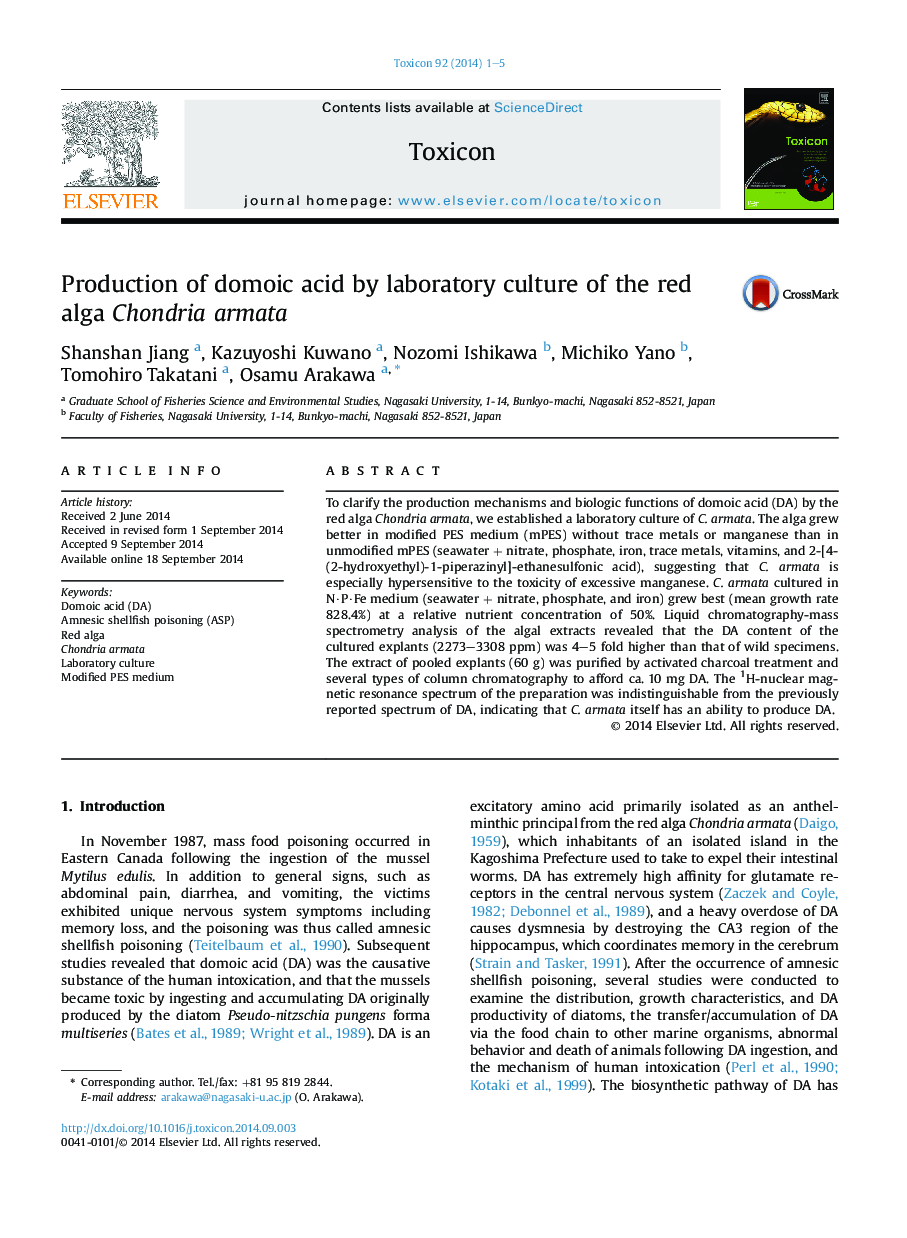| Article ID | Journal | Published Year | Pages | File Type |
|---|---|---|---|---|
| 8395896 | Toxicon | 2014 | 5 Pages |
Abstract
To clarify the production mechanisms and biologic functions of domoic acid (DA) by the red alga Chondria armata, we established a laboratory culture of C. armata. The alga grew better in modified PES medium (mPES) without trace metals or manganese than in unmodified mPES (seawater + nitrate, phosphate, iron, trace metals, vitamins, and 2-[4-(2-hydroxyethyl)-1-piperazinyl]-ethanesulfonic acid), suggesting that C. armata is especially hypersensitive to the toxicity of excessive manganese. C. armata cultured in N·P·Fe medium (seawater + nitrate, phosphate, and iron) grew best (mean growth rate 828.4%) at a relative nutrient concentration of 50%. Liquid chromatography-mass spectrometry analysis of the algal extracts revealed that the DA content of the cultured explants (2273-3308 ppm) was 4-5 fold higher than that of wild specimens. The extract of pooled explants (60 g) was purified by activated charcoal treatment and several types of column chromatography to afford ca. 10 mg DA. The 1H-nuclear magnetic resonance spectrum of the preparation was indistinguishable from the previously reported spectrum of DA, indicating that C. armata itself has an ability to produce DA.
Related Topics
Life Sciences
Biochemistry, Genetics and Molecular Biology
Biochemistry, Genetics and Molecular Biology (General)
Authors
Shanshan Jiang, Kazuyoshi Kuwano, Nozomi Ishikawa, Michiko Yano, Tomohiro Takatani, Osamu Arakawa,
